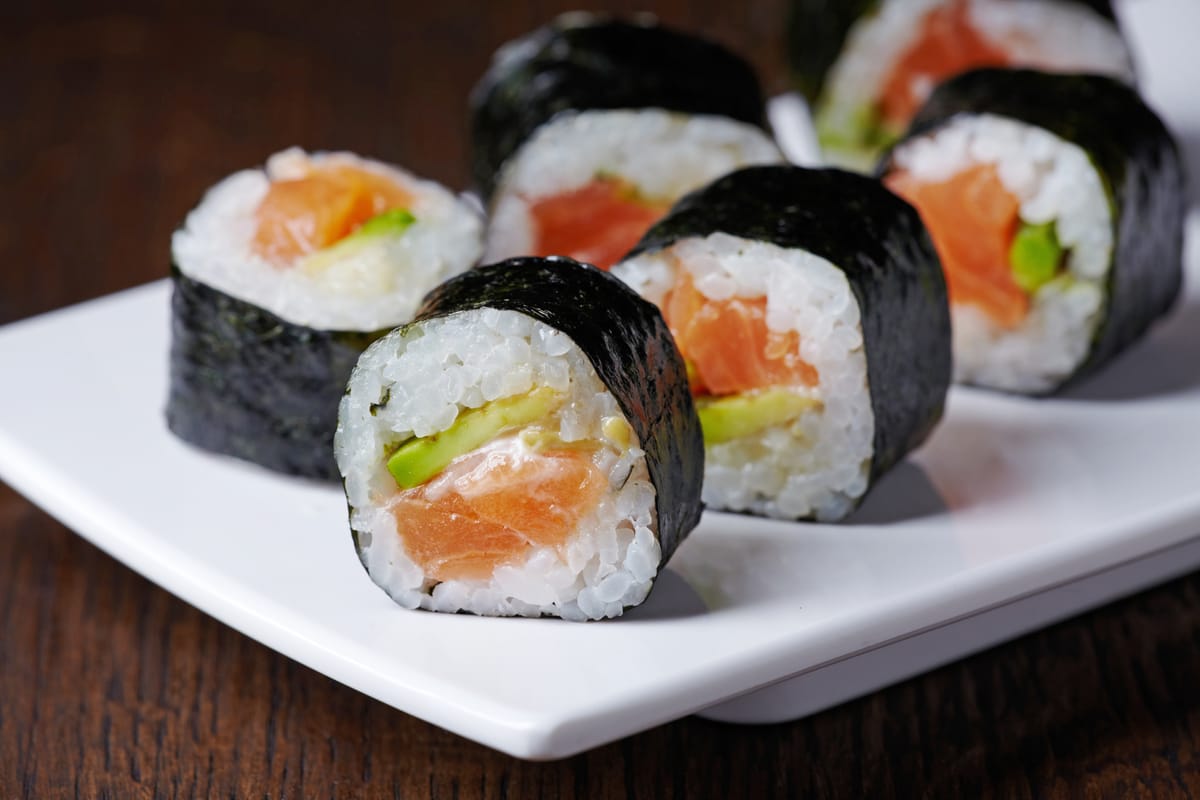Sushi has a loyal following, with 4.8 million Americans eating the dish at least once a month. The bite-sized pieces of rice and fish offer the perfect blend of flavor and variety while being a healthier choice than many other dinner options. However, with so many ways to prepare sushi, it’s challenging to remember the differences between sushi types like sashimi or nigiri sushi.
Alongside those classics of Japanese cuisine, maki sushi is perhaps one of the more recognizable sushi styles anyone can order at a restaurant. Even if most restaurants don't explicitly list maki sushi rolls on their menu, most sushi lovers already know about maki.
If you order a spicy tuna roll, California roll, or even a rainbow roll, you've ordered maki sushi. In the guide below, we'll look at what makes maki sushi a simple combination of vinegared rice, fish, and seaweed, alongside the main differences between other types of sushi and more.
What is maki sushi?
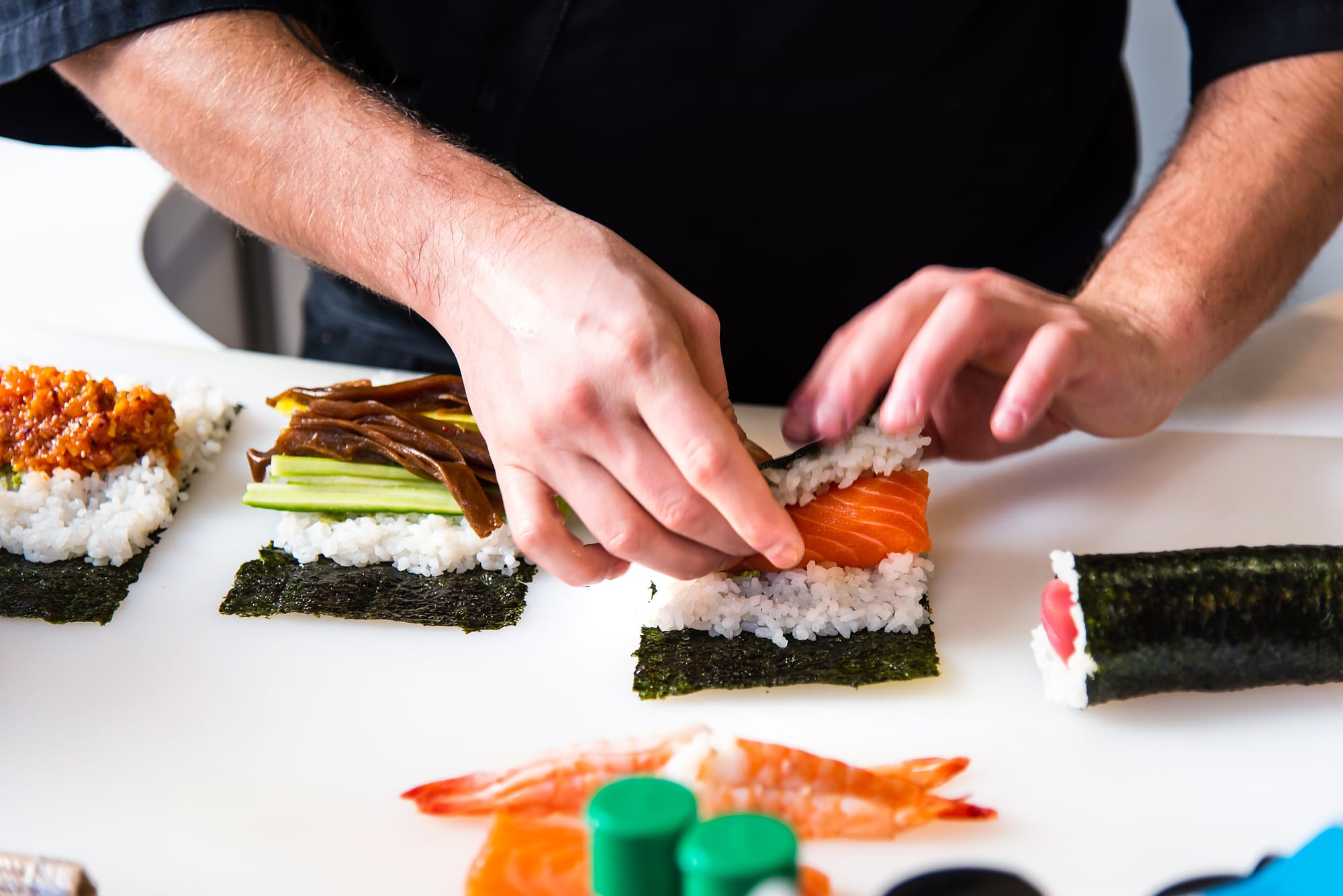
In its most basic form, maki combines fish, seaweed, rice, and other fillings rolled into a sushi roll. In Japanese, maki translates to roll. While most people might refer to any maki roll as sushi, sushi technically refers to the broader category of rolled rice.
Key ingredients for maki sushi
Rice. Seaweed. Fish. These main ingredients are necessary for maki. However, there’s more to this dish than meets the eye. Sushi rice isn't only rice placed in a cooker, and seaweed isn't harvested from the ocean for consumption right away.
Vinegared sushi rice
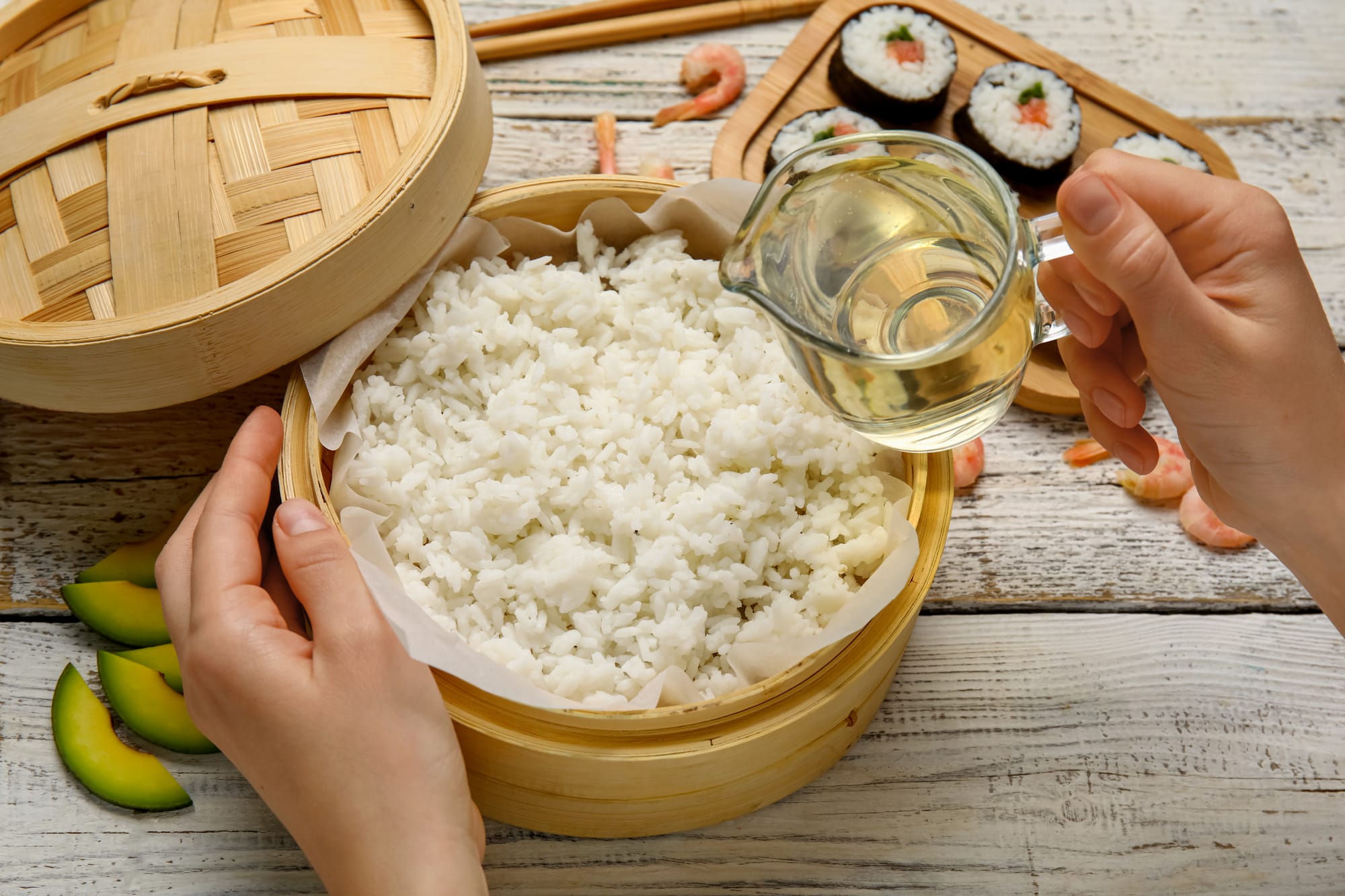
Sushi rice, or sticky rice, is the main ingredient used to hold maki together. Unlike other types of rice, this sushi rice utilizes a specific blend of salt, sugar, and rice vinegar to get that iconic sticky texture. Despite its popularity, most people don’t know their sushi rice has multiple ingredients, like added sugar, salt, and vinegar.
Nori seaweed
Nori is the dried seaweed used to assemble and wrap the maki into a delicious roll. Thanks to nori seaweed's flexibility and slight saltiness, nori sushi doesn't overwhelm the other ingredients in a standard maki roll. Instead of seaweed, some sushi chefs even use soy paper to add some variety to the typical maki roll.
Popular maki fillings
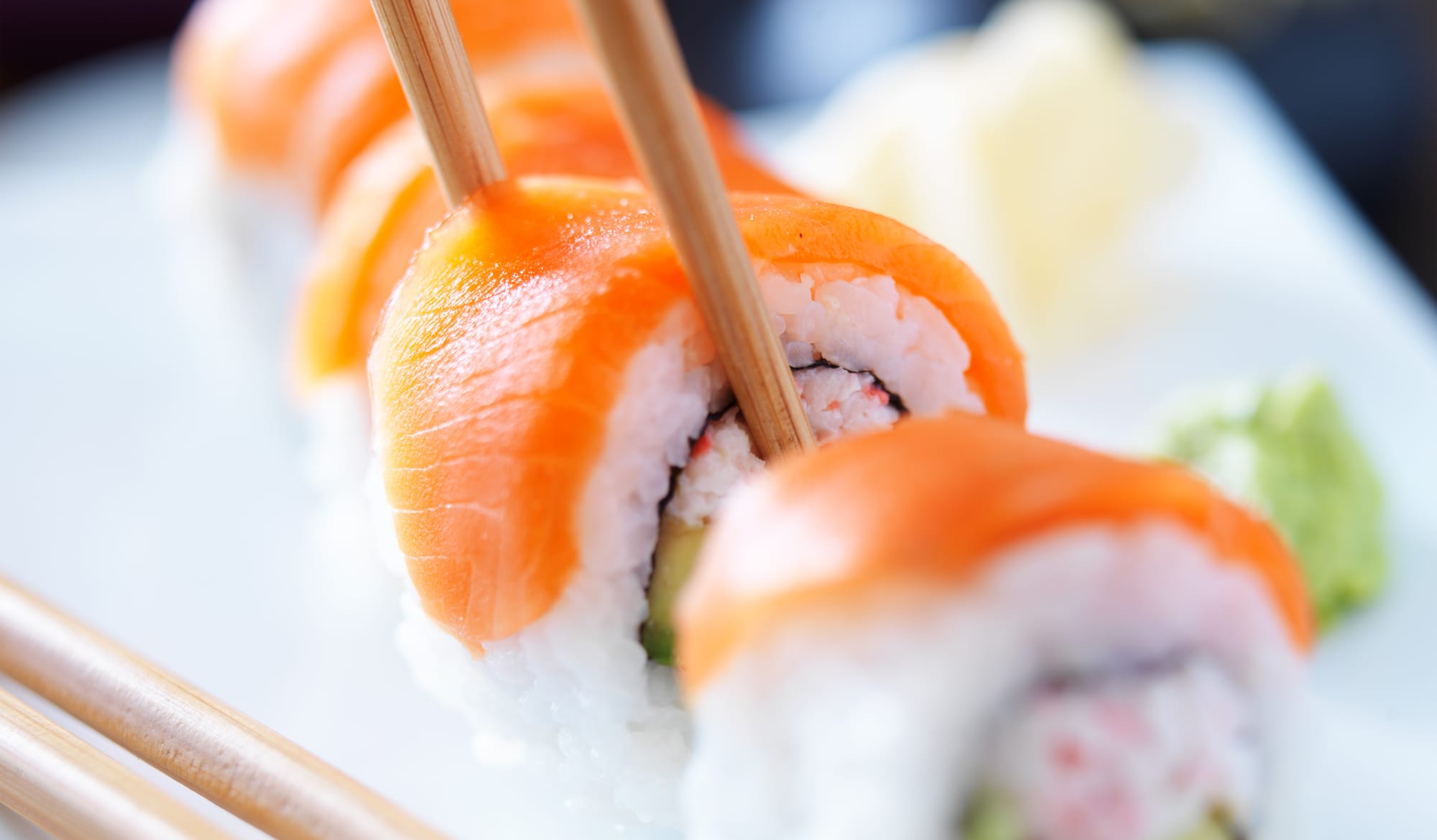
While there are probably a million variations to the classic maki roll fillings, we've distilled some favorite ingredients and styles that most sushi restaurants serve for guests.
- Cucumber adds a balance of freshness to sushi. Some guests even prefer maki rolls that only consist of cucumber, rice, and seaweed.
- Carrots create a dimension of crunch to sushi, especially if paired with cucumber and other vegetable fillings.
- Cream cheese invites a pinch of umami flavor alongside the usual deliciousness expected from anything with cheese. Some restaurants even create a special miso cream cheese to amp up the roll’s flavor profile.
- Avocado provides the flavorful and creamy texture necessary for any savory roll. Some restaurants also place slices of avocado on rolls, calling them dragon scales.
- Sautéed shiitake mushrooms add a chewy bite for those craving a slightly bitter maki experience.
- Daikon radish sprouts are probably the perfect ingredient for a zesty crunch that cucumbers and carrots will never reach.
- Smoked salmon is a classic sushi filling for a reason. It doesn’t overwhelm the palate, and it compliments all sorts of other types of maki. Don’t be surprised to see more elaborate sushi rolls built off that base salmon flavor.
- Spicy tuna is another classic, alongside salmon. Much like salmon, many sushi aficionados try a spicy tuna roll to measure a sushi restaurant's overall quality.
- Imitation crab, as we all can guess, isn't actually crab, even though it still gives any roll a much-needed fresh flavor.
- Sea urchin possesses a rare mix of salty and sweet flavors, all with a kick of umami that can't be replicated from other ingredients.
- Shrimp tempura is the fried chicken of the sea, thanks to its rich tempura crust. It's perfect for anyone craving an oily crunch in their maki. Just remember to serve it with the proper dipping sauce for maximum flavor.
Types of maki sushi rolls
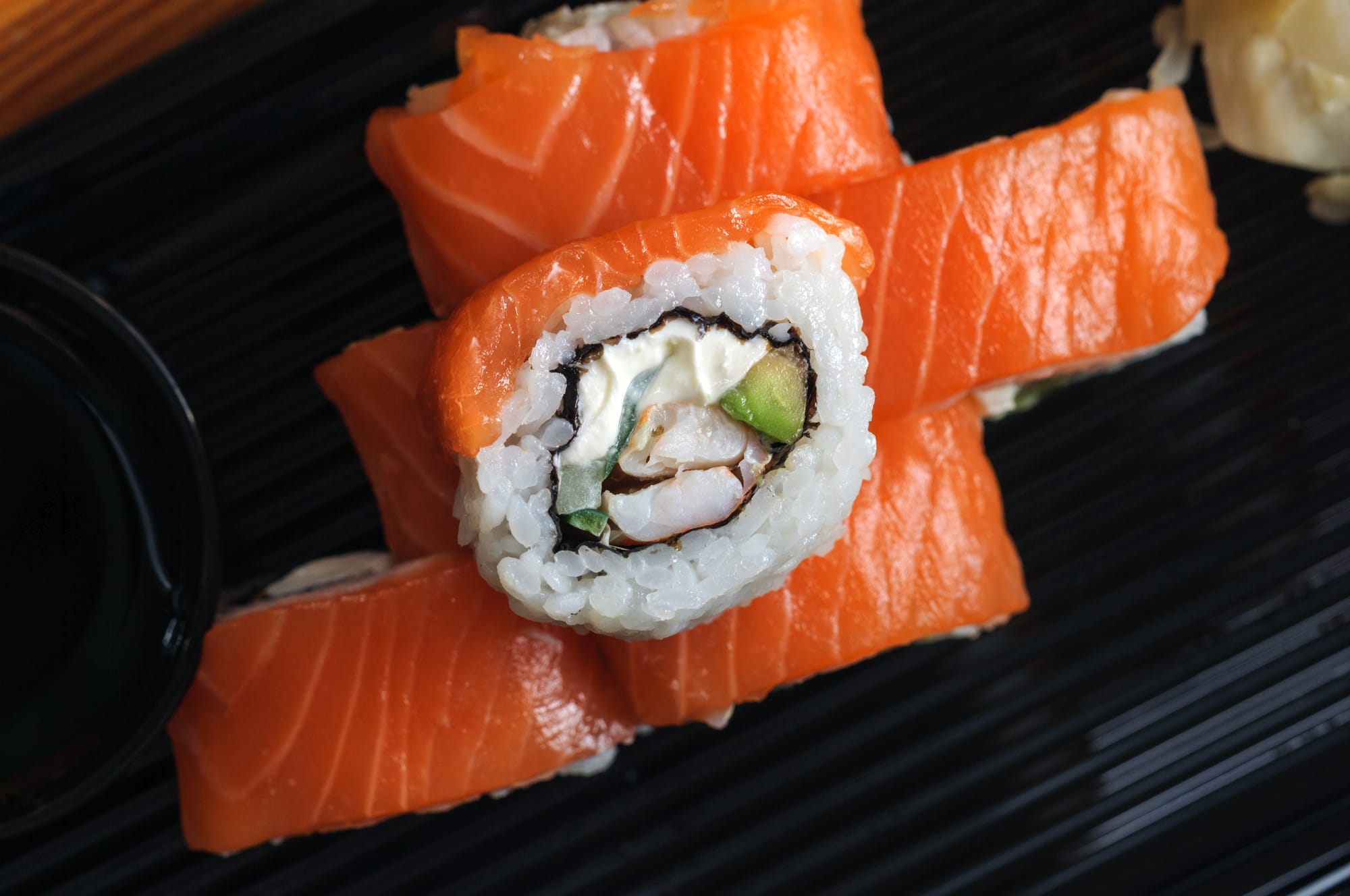
There are two main types of maki: traditional maki and the inside-out roll. Traditional maki is simply seaweed wrapped to cover a layer of rice and a delicious fish center alongside some vegetable fillings. It's what most people imagine when they hear the word sushi.
However, did you know that the popular inside-out roll is also considered maki? Some fans claim the California roll was the first to feature sushi rice wrapped over seaweed (while naysayers question the validity of such a claim). Still, there's no denying that an inside-out roll brings a unique reimagining of the classic maki style.
How to make a maki roll
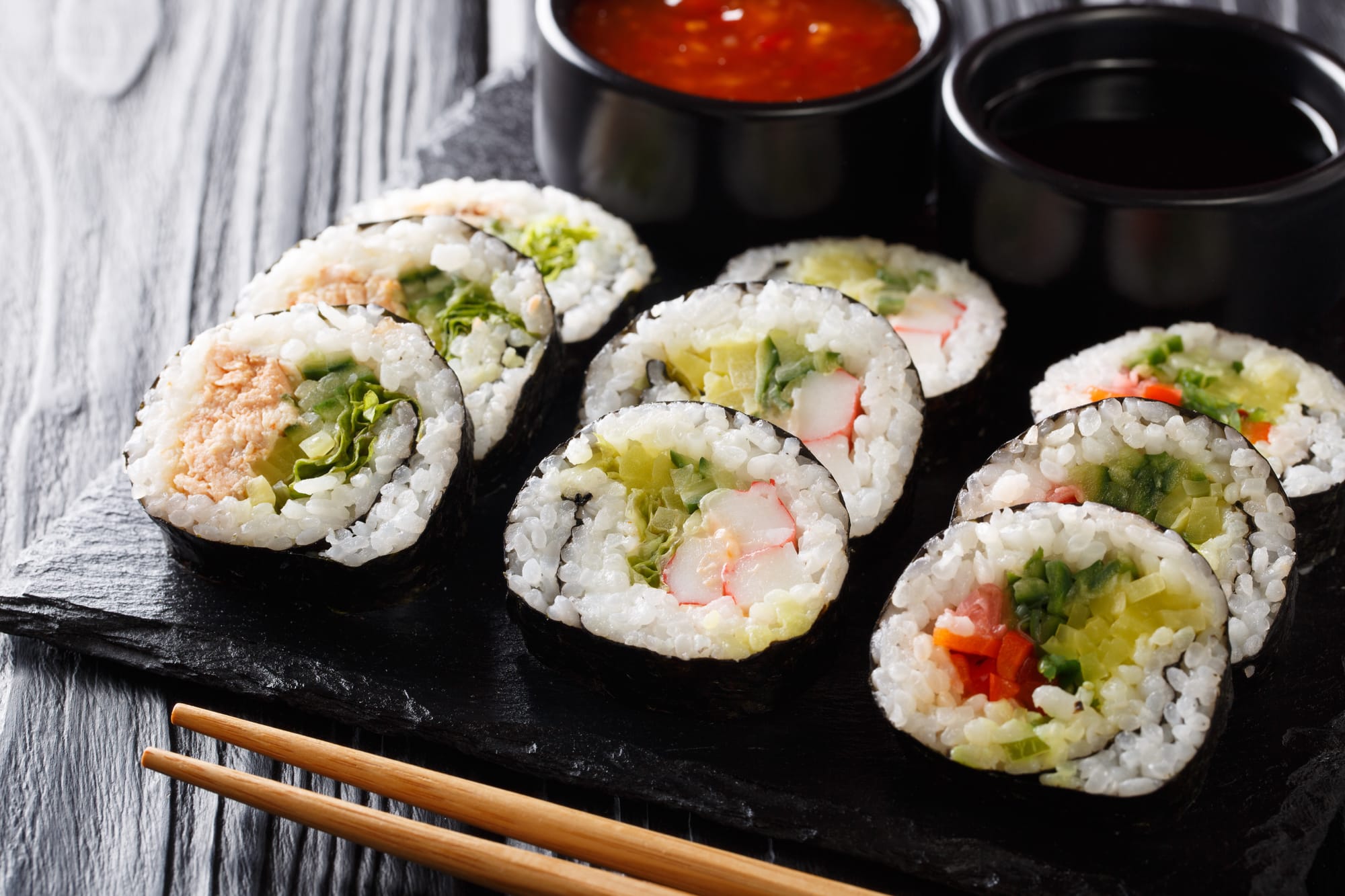
Assembling a maki sushi roll isn't rocket science, even though there are still some important techniques to practice as you make the dish over time. Below, you'll find some tips and tricks on how to craft perfectly thin rolls of maki.
Assemble the maki sushi
The key to assembling maki is evenly distributing the ingredients in the roll itself after placing a sheet of seaweed flat on a bamboo mat, otherwise known as a makisu. Add too much rice or imitation crab on one side of the makisu, and you'll have a lopsided and imbalanced roll that won't stick together when picked up by chopsticks.
Since the ingredients will be cut into small pieces after you've rolled them up, it helps to visualize the maki roll as you place each ingredient in the center of the unrolled sheet of rice or seaweed.
One nori sheet should be enough for a single thin roll of maki. If a maki dish has too many ingredients, add a second sheet of nori seaweed to prevent the thick sushi roll from falling apart mid-bite.
Maki rolling techniques
After assembling the maki roll, carefully roll the bamboo mat into a cylindrical shape. The bamboo mat will be your best guide since it keeps all the ingredients in a single, organized layout. Most sushi recipes recommend pulling the wrap over until the bamboo mat slightly overlaps itself without pressing too hard on the rice itself. If you're making an inside-out roll with sticky rice on the outside, use plastic wrap to ensure the sushi doesn't fall apart when rolled. The plastic wrap can also store the sushi for a later snack.
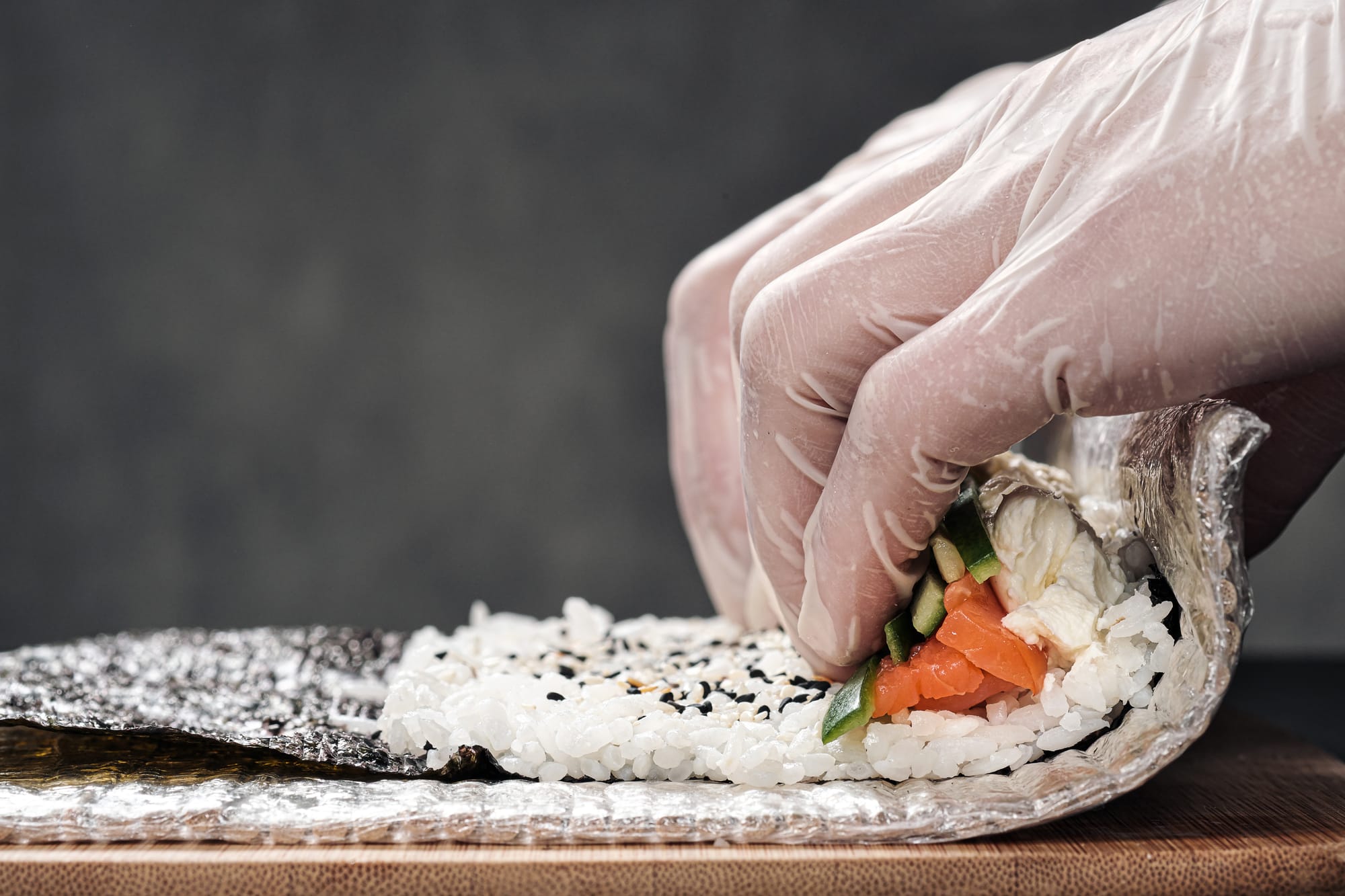
After rolling up your roll, add a few other ingredients for extra flavor. Try sprinkling some caviar for a burst of saltiness on your salmon roll, thinly slicing some avocado on your dragon roll, or even drizzling spicy mayo on your avocado roll for extra heat. To cut the maki, measure the length of the sushi by about a finger, then slice accordingly. For a thicker roll per slice, measure out two fingers at most.
Maki sushi roll vs. other types of rolled sushi
Since there are so many ways to make sushi, it's easy to confuse maki with its many counterparts. However, some key differences set maki apart from nigiri, sashimi, and even the legendary hand roll. Beyond the inclusion of rice and the placement of seaweed, maki offers a unique balance of ingredients you won't find in those other sushi rolls. Read on to discover the larger differences between these fishy dishes.
Maki vs. nigiri
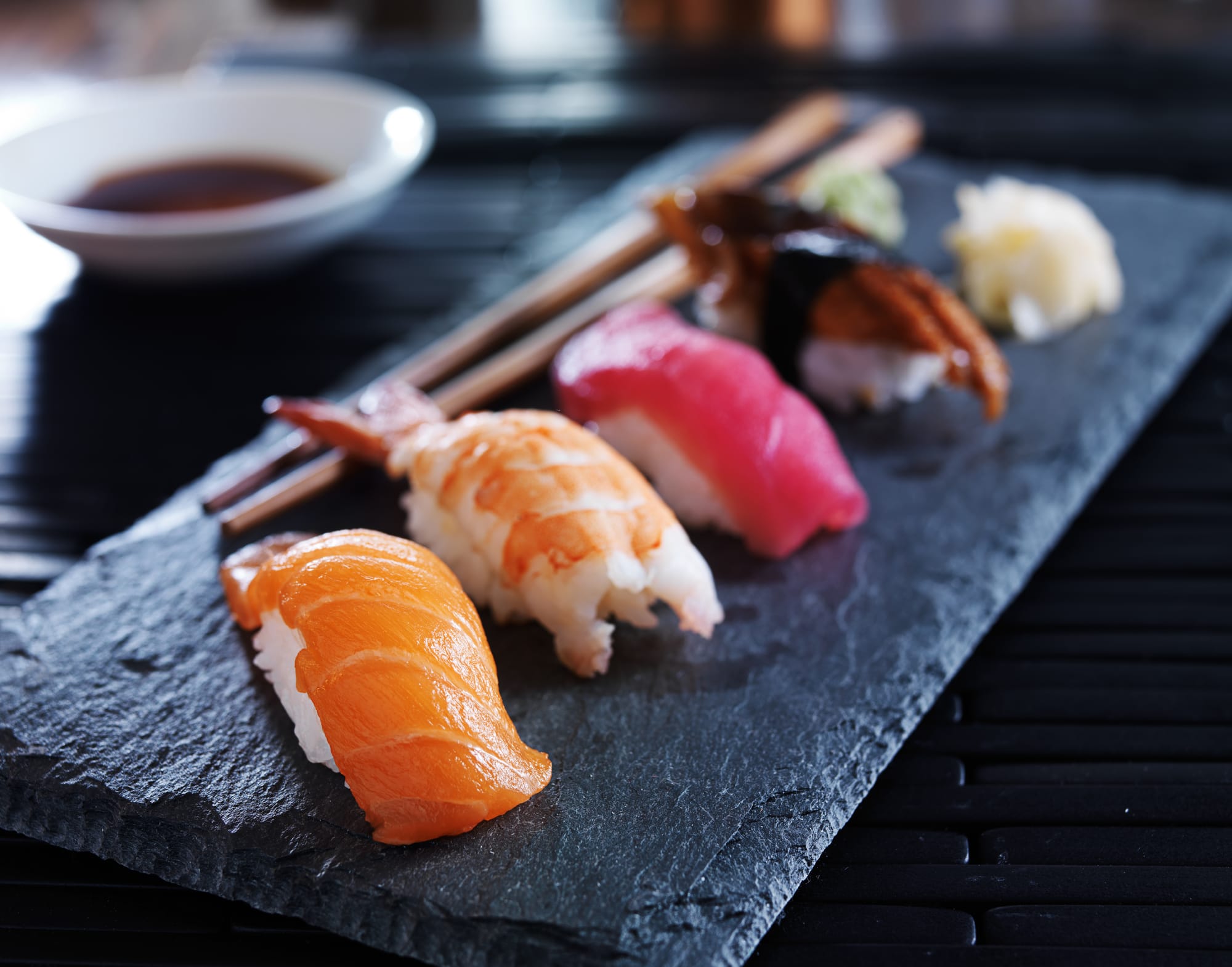
Nigiri sushi is a fresh slice of fish, shrimp, or other seafood placed onto a simple ball of vinegared rice. While it isn't larger than the typical bite-sized piece of maki, most restaurants serve about 2 – 4 pieces of tiny nigiri while serving 6 – 8 pieces of maki. And unlike maki, nigiri doesn't typically include seaweed or toppings like sesame seeds. It's simply a ball of rice and a slice of fish.
Maki vs. sashimi
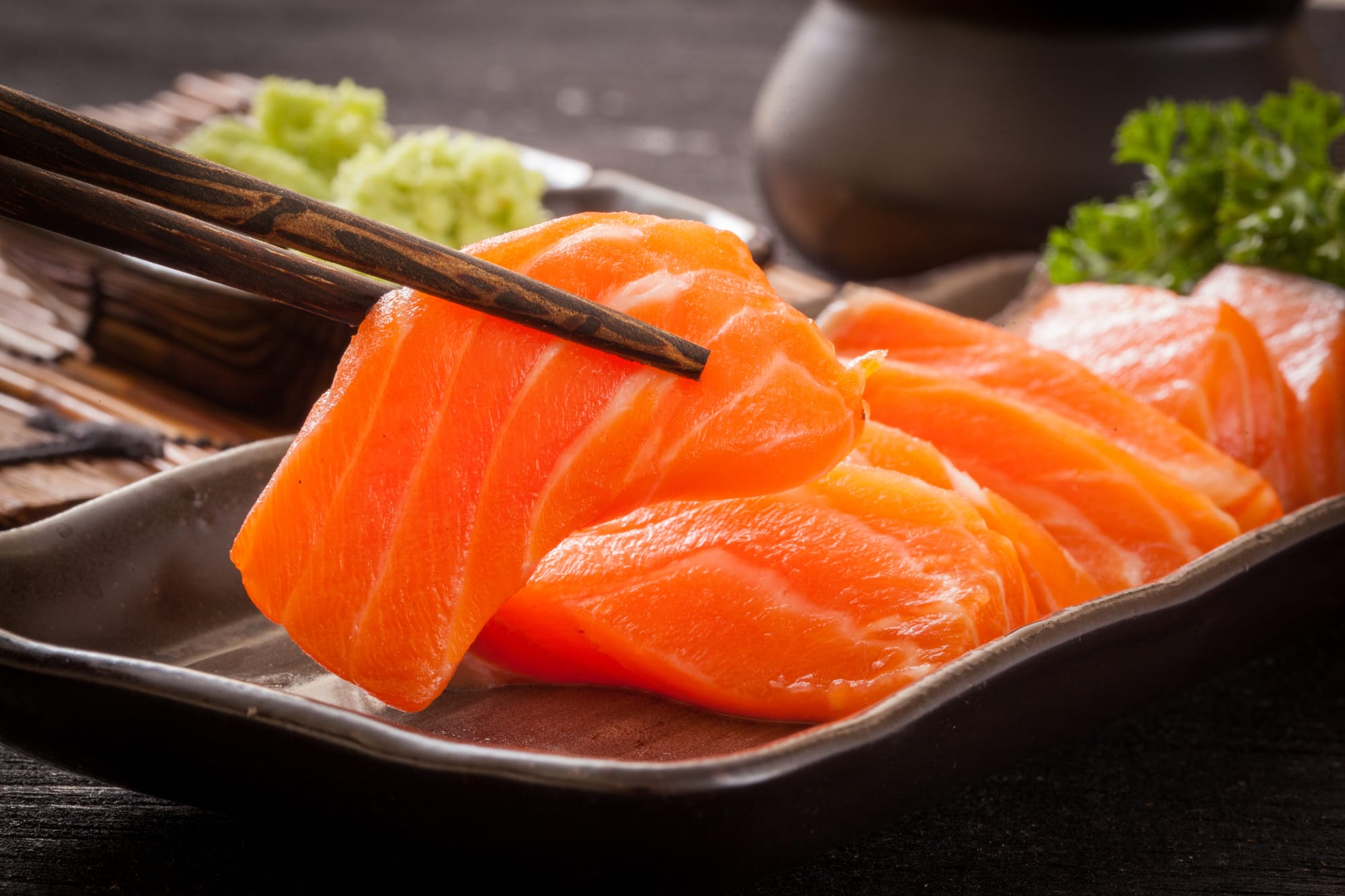
While maki uses a wide range of ingredients, sashimi is as simple as sushi gets. Maki will always need rice and seaweed as a base. Sashimi is a thin slice of raw or smoked fish eaten on its own or alongside some soy sauce. While guests usually eat maki sushi with their hands or chopsticks, chopsticks are the preferred utensil for eating sashimi.
Maki vs. hand roll
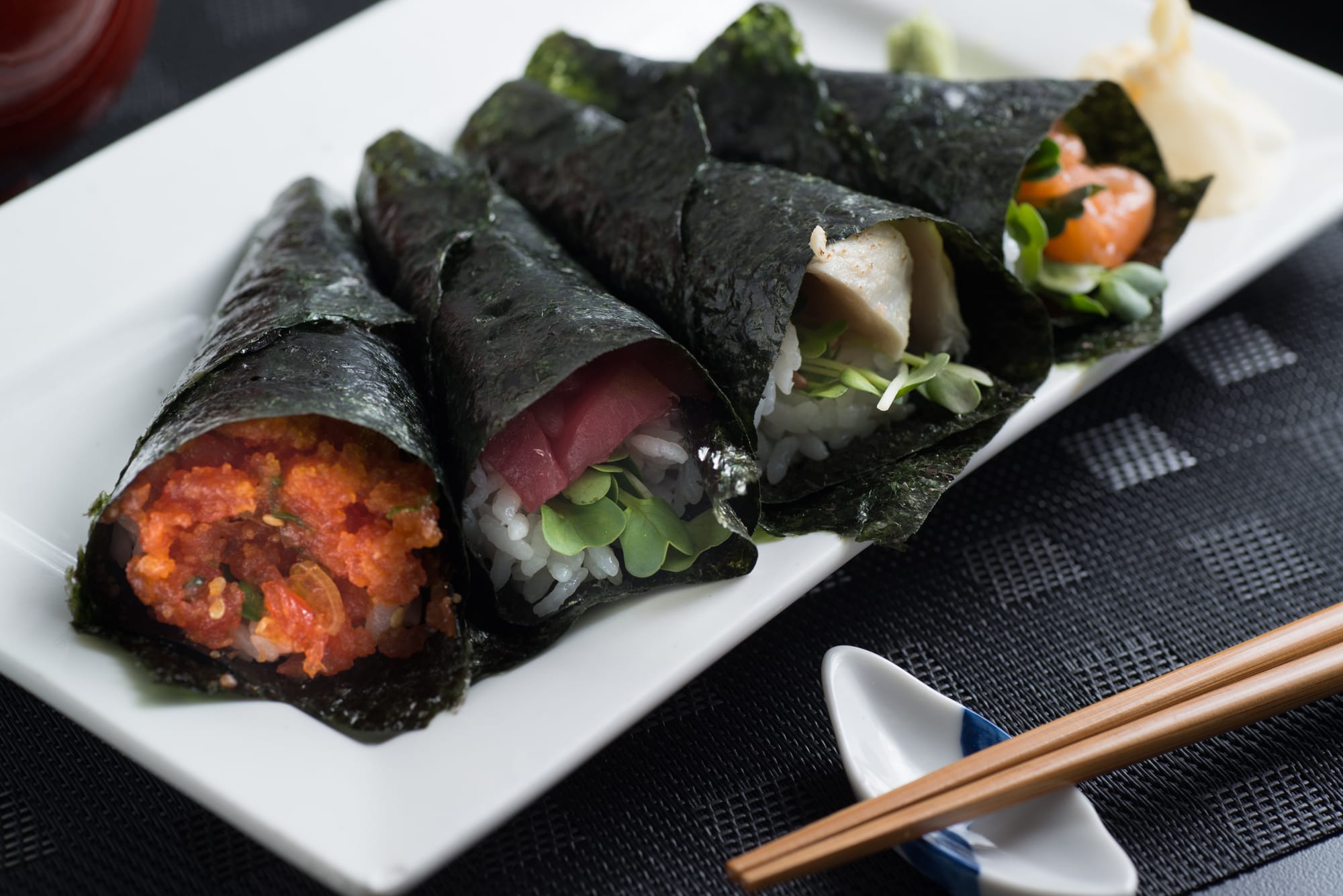
A hand roll is a fun little twist on the traditional maki. Instead of an even balance of ingredients rolled into a single uniform cylindrical shape, a hand roll is a rolled cone of the same ingredients found in maki. It might not seem like much, but a solid hand roll offers more food in each bite compared to a single piece of maki or a slice of sashimi.
How to serve & eat maki
Most restaurants serve maki in thin slices neatly organized on small rectangular plates. Although guests are expected to use chopsticks to eat their maki, anyone can ask for a fork upon request since some people have yet to master the art of chopsticks.
If you're a restaurant serving maki sushi, serve a bottle of soy sauce and a small dish of pickled vegetables on the side. These are the standard complimentary sides found in any sushi bar. Since not all sushi requires the same sauces, have servers ask guests if they'd like any other dipping sauces that aren't typically served at the table.

Is maki healthy?
Yes, maki is fairly healthy compared to other food dishes thanks to its smaller portion size and the quality ingredients of its rice and seaweed. Of course, even if most maki is typically filled with the same essential ingredients, it's still possible to serve sushi rolls that are a bit unhealthier than other rolls.
If you're eating a Philadelphia roll with extra cream cheese, that maki roll will likely be unhealthier than a spicy tuna roll or a simple cucumber roll. As always, eating a large amount of food will be much unhealthier than eating a small portion.
Is there raw fish in maki?
Yes, maki can sometimes contain raw fish. A tuna roll will likely contain raw fish and fillings like avocado or caviar. A California roll, on the other hand, will only include cooked crab or imitation crab.
If you're designing the menu at a sushi restaurant, place an asterisk (*) next to menu dishes that include raw fish. Then, at the bottom of the sushi menu, write out a small notice to clarify the use of raw fish in a dish.
Does maki have caviar?
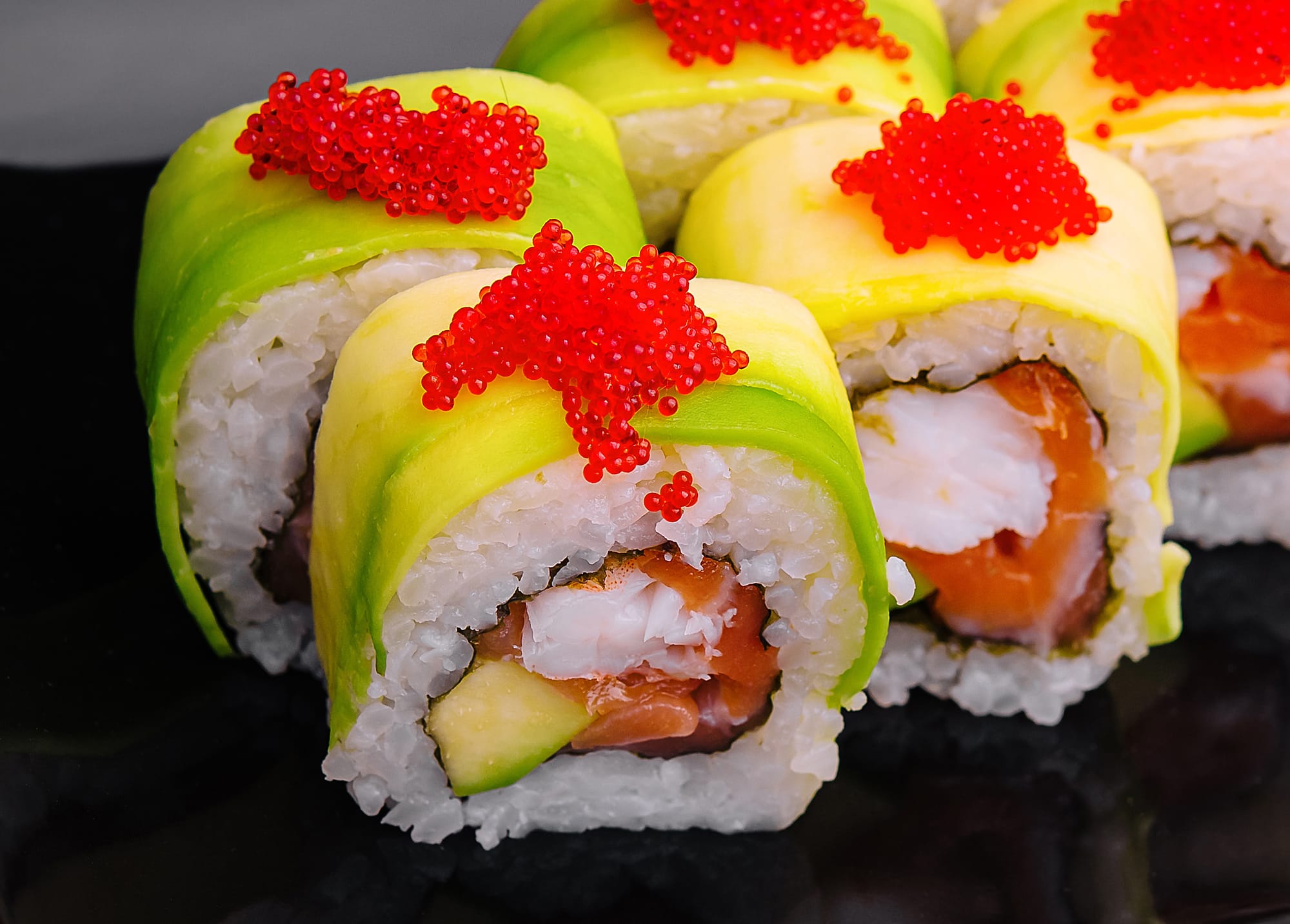
No, maki served with caviar is typically a special request or a prominent ingredient marked on the menu. Some people prefer caviar as a topping, similar to sesame seeds or avocado slices.
Other preparation methods involve including caviar as an ingredient, similar to crab meat or smoked salmon. However, some more traditional sushi restaurants in Japan do not include caviar in their sushi at all.



